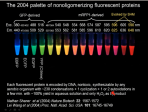 00:33:00
00:33:00
Molecules Against Cancer or for Long-Term Memory Storage
For cancer diagnosis and therapy, we are developing activatable cell-penetrating peptides (ACPPs), synthetic molecules with a novel amplifying mechanism for homing to diseased tissues. ACPPs are polycationic cell-penetrating peptides whose cellular ....
More details | Watch now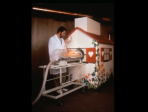 00:36:00
00:36:00
A Personal View of the History of Nuclear Magnetic Resonance in Biology and Medicine
In 1952, Felix Bloch and Edward Purcell were awarded the Nobel Prize in Physics for the description of the phenomenon of nuclear magnetic resonance (NMR). Over the years, NMR has been used in a wide range of fundamental studies in physics, and in the....
More details | Watch now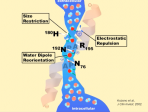 00:32:00
00:32:00
Aquaporin Water Channels _ From Atomic Structure to Malaria
Aquaporin (AQP) water channel proteins enable high water permeability in certain biological membranes. Discovered in human red cells but expressed in multiple tissues, AQP1 has been thoroughly characterized and its atomic structure is known. Expres....
More details | Watch now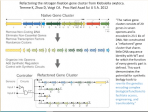 00:34:00
00:34:00
Synthetic Biology for Genetic Engineering in the 21st Century
Synthetic biologists seek to design, build, and test novel biological systems. We have chemically synthesized a bacterial genome (Mycoplsama mycoides, 1078Kb) and brought it to life by transplantation into the cytoplasm of a related species. We are....
More details | Watch now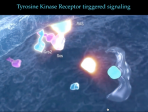 00:39:00
00:39:00
You can see a lot by observing: Optical Microscopy 2.0
Biological research and medicine were transformed by the invention and improvement of the optical microscope. Since the early 1990s, there has been another revolution in optical imaging, and manipulation of individual biological molecules and bio-mo....
More details | Watch now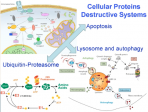 00:32:00
00:32:00
The Revolution of Personalized Medicine: Are We Going to Cure All Diseases and at What Price?
Many important drugs such as penicillin, aspirin, or digitalis, were discovered by serendipity - some by curious researchers who accidentally noted a "strange" phenomenon, and some by isolation of active ingredients form plants known for centuries to....
More details | Watch now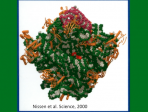 00:28:00
00:28:00
From the Structure of the Ribosome to New Antibiotics
Structural studies of the ribosome exemplify the evolution of structural studies in cell biology from the early negatively stained images of macromolecular assemblies in whole cells, to a detailed atomic understanding of the mechanisms of action of a....
More details | Watch now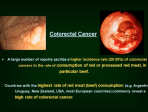 00:31:00
00:31:00
Infections Linked to Human Cancers: Mechanisms and Synergisms
Slightly more than 20% of the global cancer incidence is presently being linked to viral, bacterial, or parasitic infections. The mechanisms by which these agents mediate malignant transformation differ substantially. Some contribute directly, freq....
More details | Watch now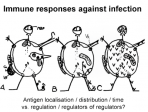 00:32:00
00:32:00
Why Do We Not Have a Vaccine Against HIV or Tuberculosis?
Analysis of the immune system is fascinating and progressing rapidly. As a field of medical enquiry, it has however, drifted and turned purely academic. This is because interest and appreciation of protective immunity in infectious disease medicine....
More details | Watch now 00:32:00
00:32:00
On The Road Toward an HIV Cure
Since the first cases of AIDS in 1981 and the identification of its etiological agent in 1983, much progress has been made in both the development of tools to prevent and treat HIV infection and the access to these tools. In particular, the wide arr....
More details | Watch now 00:30:00
00:30:00
Inheritance from Teratomas
The techniques and concepts that have resulted in the identification and isolation of embryonic stem cells have come from studies with mouse teratocarcinomas. Embryonic stem cells isolated from normal mouse embryos may be grown in tissue culture and....
More details | Watch now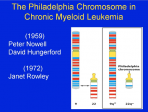 00:31:00
00:31:00
Forging a Genetic Paradigm for Cancer
It is now axiomatic that, no matter what its causes, cancer ultimately arises from the malfunction of genes. A number of clues prefigured this paradigm: the persistence of the malignant phenotype through countless cell divisions; the mutagenicity of....
More details | Watch now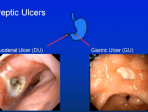 00:32:00
00:32:00
Man vs. Helicobacter _ The past 50,000 years and the next 50
The epidemiology of Helicobacter pylori continues to be an area of discovery and controversy in the 21st century. The transmission of this bacterium from mother to child allows Helicobacter DNA to mimic the evolution of maternal mitochondria DNA. B....
More details | Watch now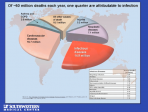 00:31:00
00:31:00
Deciphering Immunity by Making It Fail
Infectious microbes collectively represent the strongest selective pressure operating on our species, and over hundreds of millions of years, drove the evolution of the sophisticated immune system we have today. While the general outlines of immune ....
More details | Watch now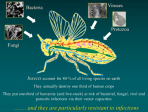 00:32:00
00:32:00
Innate Immunity: From Flies to Humans
Flies challenged with bacteria or fungi rapidly transcribe a battery of genes encoding potent antimicrobial peptides which oppose the invading microorganisms. Genetic analysis has identified two signaling cascades which control their expression: (1)....
More details | Watch now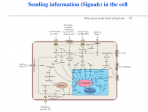 00:31:00
00:31:00
Multiscale Simulations of the Functions of Biological Molecules
Despite enormous advances in structural studies of biological systems we are frequently left without a clear structure-function correlation and cannot fully describe how different systems actually work. This introduces a major challenge for computer....
More details | Watch now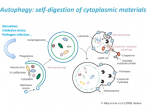 00:31:00
00:31:00
Genes and Proteins that Control Secretion and Autophagy
The broad outlines of the secretory pathway were established by pioneering EM and cell fractionation experiments conducted by George Palade in the 1960s. Beginning in the mid 1970s and early 80s, my laboratory isolated a series of conditionally leth....
More details | Watch now 00:37:00
00:37:00
Cosmic Rays: the Most Energetic Particles in the Universe
Astrophysical objects are able to accelerate atomic nuclei to energies 10^7 times more than man made accelerators such as LHC. _Particles arrive at earth from space with energies as great as 50 joules, a macroscopic energy in a microscopic particle.....
More details | Watch now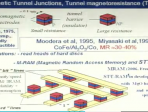 00:39:00
00:39:00
The World of Spintronics: Electrons, Spins, Computers and Telephones
Spintronics is a new field of research which exploits the influence of the electron spin on electronic transport. It is well known for the giant magnetoresistance of the magnetic multilayers and its application to increase the capacity of the hard d....
More details | Watch now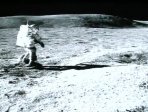 00:32:00
00:32:00
The Big Challenges
During the entire 20th century, physical sciences have advanced to such a degree that we can extrapolate how they can be applied, even in a fairly distant future. Even if we leave open the (likely) possibility of spectacular new discoveries and inv....
More details | Watch now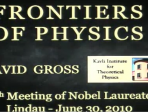 00:34:00
00:34:00
Frontiers of Physics
David discusses a few of the questions facing fundamental physics that might be answered before the 100th Lindau meeting in 2050.
More details | Watch now 00:32:00
00:32:00
The Looming World Shortage of Helium
The worldÍs supply of Helium gas comes primarily from alpha decay in rocks. The most abundant supply is in the American Southwest where it is trapped with methane is natural gas wells. That supply is estimated to last a mere 25 years. It took 4.7 bi....
More details | Watch now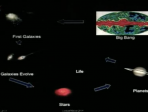 00:28:00
00:28:00
The History of the Universe, from the Beginning to the Ultimate End
John summarizes the history of the universe, from the Big Bang through the formation of galaxies and the Solar System, and the history of the Earth and some of the special factors enabling the formation of life. Our future will be hot as the Sun ge....
More details | Watch now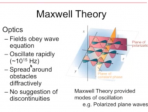 01:18:00
01:18:00
What is Quantum Optics?
The image of light waves as oscillating electromagnetic fields explains virtually all the phenomena of traditional optics. An awareness that these waves are somehow subdivided into quanta has however been with us since the early 20th century. The....
More details | Watch now 00:43:00
00:43:00
The Development of Particle Physics
Particle physics mainly developed after World War II. It has its roots in the first half of the previous century, when it became clear that all matter is made up from atoms, and the atoms in turn were found to contain a nucleus surrounded by electro....
More details | Watch now 01:04:00
01:04:00
Mapping the Universe and Its History
Using our most advanced techniques and instruments we sift through study the cosmic microwave background as a relic of the early universe to understand the events surrounding the birth and subsequent development of the Universe. A precision inspect....
More details | Watch now 00:49:00
00:49:00
Dynamics of Chemical Reactions
Every macroscopic chemical transformation, whether it is atmospheric ozone depletion or the burning of a candle, consists of millions of microscopic chemical events, which involve collisions between molecules. It has been the dream of scientists fo....
More details | Watch now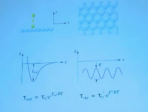 00:35:00
00:35:00
From Disorder to Order
Our experience suggests that a system will usually show the tendency to undergo spontaneously a transition from the state of order into disorder. Quite in contrast, our world developed from an initial state of great disorder into another one where ....
More details | Watch now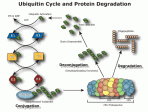 00:40:00
00:40:00
Roles of Protein Degradation in Health and Disease
The selective degradation of many short-lived proteins in eukaryotic cells is carried out by the ubiquitin-mediated proteolytic system. In this pathway, proteins are targeted for degradation by covalent ligation to ubiquitin, a highly conserved sma....
More details | Watch nowBasic Science and Co-entrepreneurship, my Experience
The design and development of inhibiting (or occasionally activating) ligands of target proteins in medicine and crop protection guided by molecular structures and functions has become an established technology in academia and industry recently._ Dr....
More details | Watch now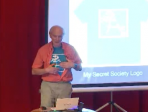 00:54:00
00:54:00
The Revolutionary Impact of the GOOYouWiki World (GYWW) on Education and Student Success
Prof. Kroto starts his lecture with remarks on his boyhood and his passions at school and University, especially graphic art and drawing. He mentions his 4/5 rule and shows the connection between theory and experiments, and he is sold on scientific....
More details | Watch now 00:39:00
00:39:00
Molecular Catalysis for Green Chemistry
Science is inevitably intertwined with society. The state of the art of science, coupled with industrial endeavors, has determined our quality of life. Chemists are proud of their ability to generate high value from almost nothing by using accumu....
More details | Watch now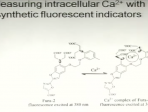 00:35:00
00:35:00
Designing Molecules and Nanoparticles to Help See and Treat Disease
Molecules to observe and manipulate biological systems can be devised by a variety of strategies, ranging from pure chemical design and total synthesis to genome mining and high-throughput directed evolution. Examples of both successes and failures a....
More details | Watch now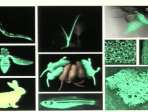 00:27:00
00:27:00
Adventures in Nontranslational Research
Professor Martin Chalfie regrets the disproportionately high funding of translational research, defined as applied research for the treatment of human diseases. With examples from the research in his lab he wants to show how important nontranslatio....
More details | Watch now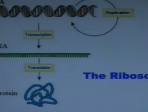 00:37:00
00:37:00
The Amazing Ribosome
Ribosomes are the universal cellular machines that act as polymerases that translate the genetic code into proteins. They posses spectacular architecture accompanied by inherent mobility that facilitate their smooth performance in decoding, peptide ....
More details | Watch now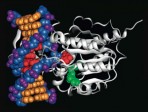 00:40:00
00:40:00
Why I love Microbes
We live in a fascinating world surrounded by life. Much of that life is clearly visible like the plants and animals that we see every day. However, far more is invisible to the naked eye and it is to this realm, the microscopic world, that I will t....
More details | Watch now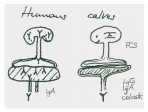 00:51:00
00:51:00
Why do we not have a vaccine against TB or HIV (yet)?
Survival of vertebrate hosts against infections depends on important natural or innate resistance mechanisms combined with adaptive immune responses of T and B cells. Infectious agents probe the limit of immune responses and help to characterize thr....
More details | Watch now 00:46:00
00:46:00
Darwinian evolution as understood by scientists of the 21st century
After a short reminder of the historical development of evolutionary biology, elements to a molecular theory of Darwinian evolution will be presented. Biological evolution is driven by the availability of genetic variants in populations. The occasi....
More details | Watch now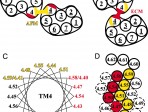 00:38:00
00:38:00
Protein Crosstalk in Cell Signaling
This talk concentrates on cellular regulation by tyrosine phosphorylation which has been directly implicated in cell growth, differentiation and transformation. Growth factor receptors transduce their signal by recruiting a multiplicity of adaptor p....
More details | Watch now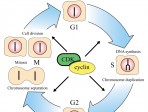 00:12:00
00:12:00
The cell cycle and cancer
It was in 1882 that Walther Flemming published drawings of chromosomes lining up in mitosis and parting equally to the daughters of cell division, and 20 years later that Theodor Boveri explained the significance of the chromosome dance in terms of t....
More details | Watch now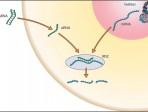 01:05:00
01:05:00
RNAi and development in C. elegans
Argonaute proteins interact with small RNAs to mediate gene silencing. C. elegans contains 27 Argonaute homologs, raising the question of what roles these genes play in RNAi and related gene-silencing pathways. Through our collaborator, Dr. Shohei....
More details | Watch now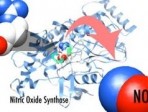 00:51:00
00:51:00
Nitric oxide as a messenger molecule and its role in drug development
The role of nitric oxide in cellular signaling in the past three decades has become one of the most rapidly growing areas in biology. Nitric oxide is a gas and a free radical with an unshared electron that can regulate an ever-growing list of biolog....
More details | Watch now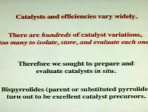 00:39:00
00:39:00
Recent Advances in Olefin Metathesis Catalyzed by Molybdenum and Tungsten Alkylidene Complexes
In the process of preparing M(NR)(CHCMe2R')(OR")2 (R' = Me or Ph) species (or analogs that contain enantiomerically pure biphenolate or binaphtholate ligands) in situ by treating M(NR)(CHCMe2R')(pyrrolide)2 species with alcohols, we have discovered M....
More details | Watch now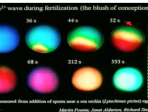 00:41:00
00:41:00
Building and Breeding Molecules to Spy on Cells, Tumors, and Organisms
Molecules to observe and manipulate biological systems can be devised by a variety of strategies, ranging from pure chemical design and total synthesis to genome mining and high-throughput directed evolution. Examples of both successes and failures ....
More details | Watch now 00:35:00
00:35:00
GFP and After
Since its introduction as a biological marker, the Aequorea victoria Green Fluorescent Protein (GFP) has had a strong impact in biology, being used in an ever-increasing variety of ways. I will review a bit of the history of GFP and show how having ....
More details | Watch now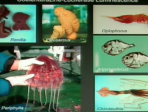 00:26:00
00:26:00
Chemistry of Bioluminescence
There are numerous kinds of luminous organism on earth. Mysterious emission of light from them inspired the curiosity of mankind ever since the ancient times. In history, Raphael Dubois discovered luciferin and luciferase from one of them, a click ....
More details | Watch now 00:28:00
00:28:00
Canoeing in the Arctic, a Scientist’s Perspective
As scientists, our livelihoods are supported by teaching and research, but we also have the opportunity to make observations beyond our usual confines and share these with non-scientific citizens. Growing up in my native state of Minnesota, I have al....
More details | Watch now 00:33:00
00:33:00
An Earth Powered Predominantly by Solar and Wind Energy
I shall present and explain the thesis that mankind is on the threshold of a dramatic transition: From an earth, predominantly powered by oil and other fossil fuels, with unsustainable global warming, to a new earth predominantly powered by "clean" s....
More details | Watch now
